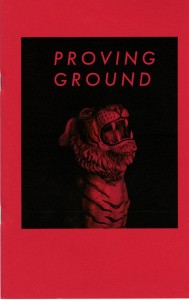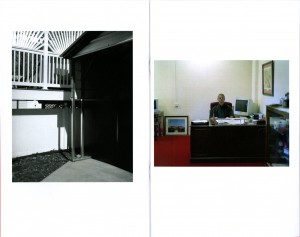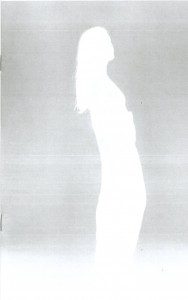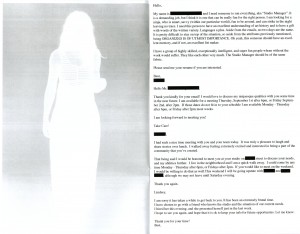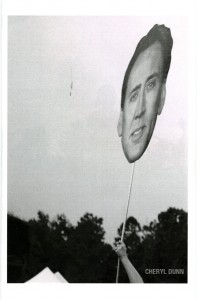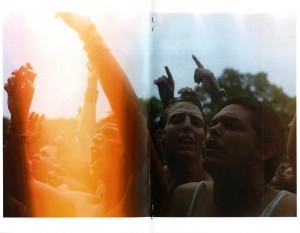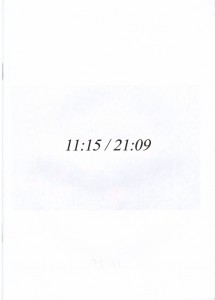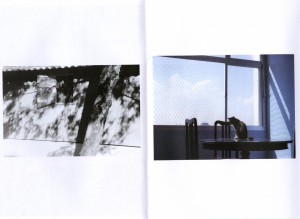photobook, photo books, artists’ books, artists’ publishing, self publishing, independent publishing
So what’s in a name? Or more to the point, what’s in a descriptive phrase? How do we as curator’s, makers, and librarians parse the difference between new publications and publication types that build on the history of 20th century artists’ books and zines?
I have been puzzling over this for the past 15 years, more so in the past five. Ever since attending the second annual self published photobook and zine fair at CCNY, where I first saw artists blending genres, mixing up zines/artists books/photo books/magazines. Often each genre type was referred to or used by different artists though the format remained the same. Interesting and vexing. For the curator this was an interesting change or nuance within the publishing arena. As a library cataloger, of which I am not but work closely with, this was vexing to say the least. Drawing upon historic knowledge a self published or independently published work by an artist might be referred to as an artist book (by the artist/author). A publication of the same size, format, binding, and similar photographic content, by a photographer, might be called a photo book or photo zine. Or vice versa, or neither, or one or the other.
“Proving Ground” by Jason John Wurm, 2013, includes the following colophon note “All photographs were taken on and around the Aberdeen Proving Ground, Maryland.” And the copy in hand is number 7 of 20. A limited edition – borrowing the conventions from find printing, or printmaking. The format is that of an 8.5 x 11″, staple (2) bound pamphlet. Red card stock cover and white pages, each with a snapshot photograph, color laser printed recto and verso. Each page has a different image with large white borders. The images are unremarkable: interior and exterior images of domestic spaces, portraits, and snaps of people. I bought it for two reasons: one, it is from Maryland and my library is in Baltimore, so there is regional significance, and two, the publication is genre ambiguous. It could be a zine, it could be a photobook or photo zine, or it could be an example of artists’ publishing. Better yet, it could simply be self published or independently published.
A similar work is by the New York artist Lindsey Castillo that is untitled, using color laser printed images and text, also taking advantage of 8.5×11″ sheets folded and stapled to make a pamphlet. She includes images of woman throughout in a washed out light gray and white, with two snaps of a young woman in work wear as a center fold, if that. The text is from the author’s resume and various rejection letters, with elements blackened out much like the CIA does with top secret documents. I selected this book, as with the previous title, because it falls into several genres. But also because it is representative of other works by artist’s documenting their experience in the workplace, or applying for jobs, rejection letters is also another theme in similar works from previous decades. This book, this artist, comments on their experience in this economy and job market; representing the current environment.
A third such publication is “We Are All” by Cheryl Dunn. This little (insert genre term from above) publication is again a staple bound pamphlet book using color laser printer or similar technology to fix the images to the paper pages. All the images, again, rely on snapshots, most in color, some in black and white. For this book the images are of people, seemingly concert goers at a very large outdoor concert. Sex, drugs and rock and roll, might be another over used theme-description. Why did I purchase this publication? Again, it is representative of a contemporary genre type recalling an amateur Nan Goldin, if you will, but without the , or what Roland Barthes refers to as the punctum, in his book Camera Lucida. Little photo books/zines like this are so common that many people pass them over, but they clearly are a sub genre unto themselves.
To make this point, check out “11:15 / 21:09″ by campanhiarapadura.com. Again, the format of a staple bound pamphlet binding on white 8.5×11” sheets folded in half. Color and black and white images in the shape of snap shots with generous white borders. The images are more aligned to those of “Proving Ground” but of an urban landscape in another country. Again, unremarkable overall. Yet, still compelling within its own sub genre.
Stay tuned to this blog. I will post further examples of similar works, but ones that differ in intent/content.

